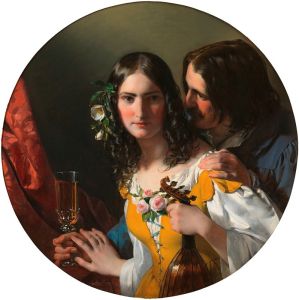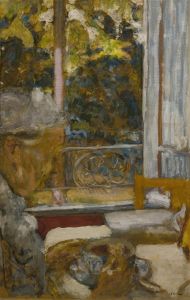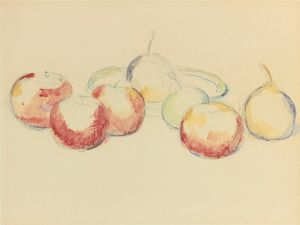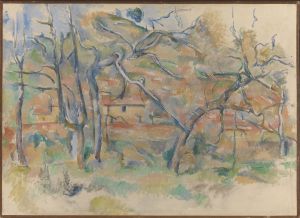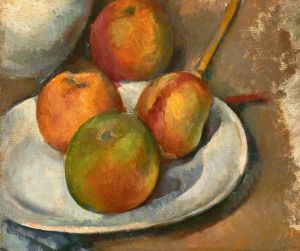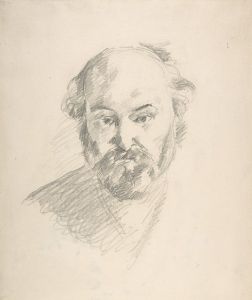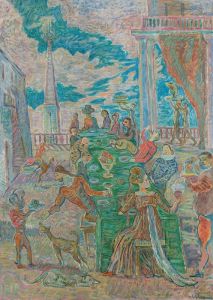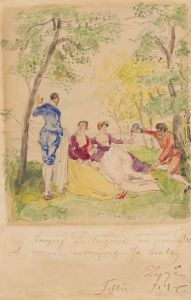
Bowl and Milk-Jug
A hand-painted replica of Paul Cézanne’s masterpiece Bowl and Milk-Jug, meticulously crafted by professional artists to capture the true essence of the original. Each piece is created with museum-quality canvas and rare mineral pigments, carefully painted by experienced artists with delicate brushstrokes and rich, layered colors to perfectly recreate the texture of the original artwork. Unlike machine-printed reproductions, this hand-painted version brings the painting to life, infused with the artist’s emotions and skill in every stroke. Whether for personal collection or home decoration, it instantly elevates the artistic atmosphere of any space.
Paul Cézanne's "Bowl and Milk-Jug" is a notable example of the artist's still life paintings, which played a crucial role in the development of modern art. Cézanne, a French Post-Impressionist painter, is renowned for his unique approach to form and color, which laid the groundwork for the transition from 19th-century artistic concepts to a radically different world of art in the 20th century.
"Bowl and Milk-Jug" exemplifies Cézanne's innovative technique and his departure from the traditional still life compositions of his predecessors. While specific details about the creation date of this particular painting are not widely documented, it is known that Cézanne produced a significant number of still lifes throughout his career, particularly in the late 19th century. These works often featured everyday objects such as fruits, pottery, and household items, arranged in a manner that emphasized their geometric forms and spatial relationships.
Cézanne's approach to still life was revolutionary. He sought to depict objects not just as they appeared to the eye, but as they existed in space, with a focus on their underlying structure. This method involved breaking down objects into basic geometric shapes like cylinders, spheres, and cones, which he believed were the fundamental forms underlying all natural objects. In "Bowl and Milk-Jug," this technique is evident in the way the objects are rendered with a sense of solidity and volume, achieved through careful modulation of color and tone.
The painting is characterized by Cézanne's distinctive brushwork, which consists of small, repetitive strokes that build up the surface of the canvas. This technique creates a sense of depth and texture, allowing the viewer to perceive the weight and mass of the objects depicted. The color palette is typically subdued, with a focus on earthy tones and subtle contrasts, which contribute to the overall harmony and balance of the composition.
Cézanne's still lifes, including "Bowl and Milk-Jug," were instrumental in challenging the conventions of perspective and representation that had dominated Western art for centuries. By emphasizing the flatness of the canvas and the two-dimensionality of the painted surface, Cézanne paved the way for the development of Cubism and abstract art. His work was highly influential for artists such as Pablo Picasso and Georges Braque, who further explored these ideas in their own revolutionary works.
In summary, "Bowl and Milk-Jug" is a testament to Paul Cézanne's innovative approach to still life painting. Through his exploration of form, color, and spatial relationships, Cézanne not only transformed the genre but also laid the foundation for many of the artistic movements that followed. His work continues to be celebrated for its profound impact on the trajectory of modern art.





